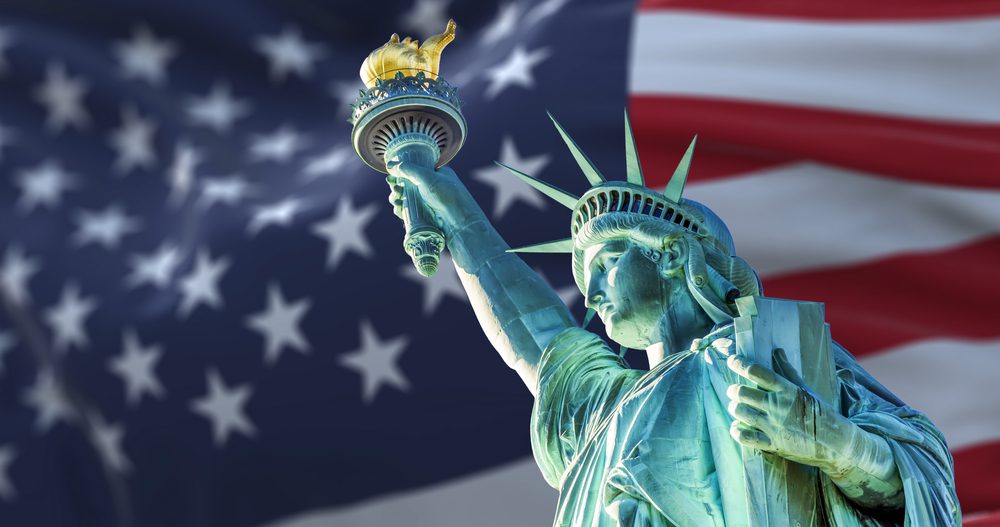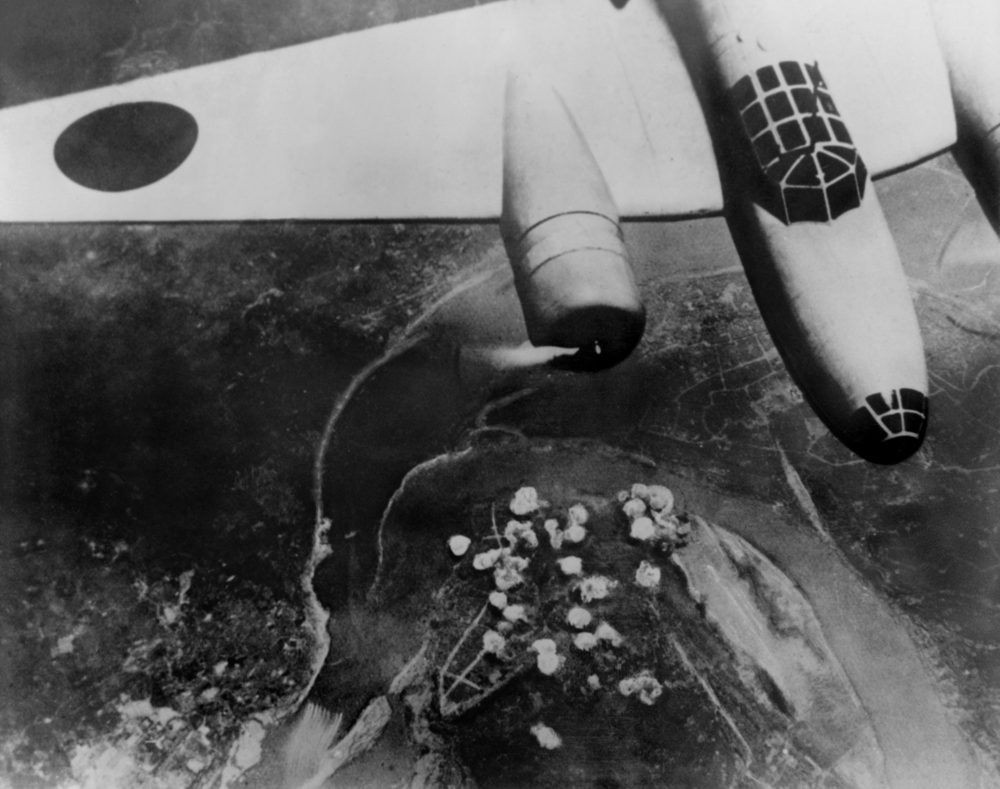Who were the first Americans?
Europeans had traveled westward to the New World way before the Taino Indians greeted Christopher Columbus, who was sailing the Caribbean Ocean in 1492 around Guanahani (most probably San Salvador Island, although it might have been the Turks and Caicos Islands or another Bahamian Island, depending on which historians you believe).
There is evidence that roughly 1,000 years ago, Vikings from Scandinavia tried to set up a foothold (and possibly scouted locations for the Metrodome or IKEA) on what they called Vinland (nowadays Newfoundland, Canada). But even they were newcomers on the ice land.
The first people of North America arrived 35,000 years ago, most likely migrating from Asia. Are you curious to find out some things about your distant ancestors? Here are 10 interesting facts about the first Americans!

1. Bridge to Somewhere
There are two main theories that explain how the early migration to North America may have happened.
According to the first, historians claim that hunters crossed the Bering Strait from Siberia to Alaska on a land bridge that was built when the Bering Sea level dropped by hundreds of feet during the last ice age. (There was a complete connection between North America and Asia until around 10,000 BCE when tide and time created the first bridge to nowhere.)
The second theory pictures that the same hunters arrived in Alaska earlier using a boat and went southward down the coastline. In either situation (most historians claim both ways of travel were used), these people arrived during different time periods, perhaps beginning as early as 35,000 years ago.
What we know for sure is that the first Americans and their descendants eventually continued their journeys and populated the New World, all the way to the farthest areas of South America.
2. Athabaskan Languages
The long-haul migration made by some of the first Americans can be observed in the common language, Athabaskan, spoken by the folks who settled in northwestern Canada and Alaska around 7000 BCE and the Navajos and Apaches of the southwestern US.
The Athabaskan language family is one of the largest North American Indian language groups, consisting of about 38 languages.
Following the Ice Age, the topographical diversity and warming climate of North America contributed to the development of a great variety of lifestyles and cultures among these.
…Wait a second. What should these people be called?
3. First Americans: Nomenclature
The term “Indian” for the first Americans was used by Columbus first. Thinking that he was in Asia, Columbus called those folks he came across in the New World “Indios.” However, the anglicized version of the name stayed.
In the 1960s, activists in the US and Canada argued that the name “American Indian” wasn’t only a misnomer but also carried racist connotations. So “Native American” soon became the preferred name for the first Americans, although many indigenous folks living north of the Rio Grande chose to refer to themselves as Indians further.
By the last years of the 20th century, native people all around the world were encouraging others to use their tribal names when possible. Still, in our country, many people of indigenous heritage continued to refer to the first Americans as Indians.
4. Agriculture and Communities
Many of the first Americans were agricultural folks, while others were hunting-and-gathering cultures. They domesticated a variety of animals and plants, including potatoes, squash, beans, maize (I call it corn), and turkeys, as well as different semi-domesticated species of seed- and nut-bearing plants.
These and many other resources were used to help communities survive, ranging from tiny hamlets to cities like Cahokia, which back then had a population of 10,000 to 20,000 people.
Despite the temporal and regional variation, prehistoric farming communities shared some similarities. Farming groups were generally more sedentary than Archaic folks, although the lack of domesticated animals in Northern America (with the exception of turkeys and dogs) meant that most communities continued to undertake hunting forays.
5. Housing
The first Americans formed different groups that were distinguished by the type of houses in which they lived. For instance, dome-shaped ice houses, or igloos, were created by the Eskimos in what would turn into Alaska and have continued to be built by children of various ethnic origins throughout the northern US annually during the winter months.
Rectangular plank houses were developed by the Northwest Coast Indians. Skin and earth tepees and lodges were used by prairie and plains tribes (and preferred by Hollywood).
Some of the first Americans of the Southwest (also called Pueblo Indians) produced flat-roofed, often multistoried houses, while the Northeast Indians had barrel houses.
Religious, social, and economic customs likewise varied with native groups, as did clothing, weapons, and crafts.

6. Kinship
Despite differences in culture and language, the first Americans did share some characteristics in common. Many American Indian culture groups were organized around kinship norms. Kinship ties, whether based on bloodlines or marriage, served as the framework of the economic, political, and religious systems.
Marriage traditions varied but were rigorous. Immediate families had a significant role but not as significant as extended families. In some groups, a husband’s extended family took precedence; in others, it was the wife’s family. In most regions, women also did farming, and as primary producers, sometimes they were given more decision-making power than their European counterparts.
7. Spiritual Life and Worldview
The first Americans believed that all of nature was alive, interdependent, and interwoven in a single spiritual world that included plants, people (alive and dead), and rocks; good and evil; the sun and moon.
Spiritual enlightenment was sought in demanding physical challenges as well as in dreams and through group rituals (like Sun Dance) and solitary vision quests. Both medicine men and women served as healers and spiritual advisors.
The notion of cooperation was also quite important to the Indian worldview. Beneath the expectation of following the rules was a patient pursuit of consensus, understanding, and accommodation.
Finally, most of the first Americans believed in the afterlife and the immortality of the human soul.
8. Northeastern Indians
Most of the Northeastern Indians practiced agriculture and hunting, including turkey, elk, deer, and fish. For the Iroquois, Algonquin, Mohican, Wampanoag, Ojibwa, Sauk, Ho-chunk (Winnebago), Illinois, and Fox people, the most important economic and social unit was the village, which usually had between a few dozen and a few hundred folks.
Several hamlets of villages organized into a tribe, and several tribes sometimes formed complex confederacies. These kinds of alliances were often very powerful political organizations and usually were named for the tribe’s most influential member. According to historians, the most famous of these alliances, the Iroquois Confederacy, was formed between 1570 and 1600 by a Huron called Dekanawidah.

9. Plains Indians
Life for the first Americans of the plains changed radically after the Spanish conquistadors brought horses with them. By 1750, the Native Americans of the Plains were quite familiar with the horses, which greatly increased productivity and mobility in the region.
Many folks who lived in villages and practiced agriculture became committed nomads, including the Blackfoot, Crow Sioux, Arapaho, Kiowa, Cheyenne, and Comanche. Groups across the region shared multiple forms of material culture, including tailored leather clothing, a variety of royalty symbols (such as feathered headdresses), tepees, and large drums used in ritual contexts.
The Sun Dance, a group ritual that demanded a high degree of self-sacrifice and piety from its participants, was also widespread over the Plains.
10. The Columbian Exchange: Consequences and Contributions
There were probably about 1.5 million Native Americans in what is now considered the United States when Columbus arrived (the numbers may vary greatly). Within decades, a lot of these first Americans would die, but not because of violent encounters with Europeans who had superior weapons.
The main cause of death was the attack of new infections carried from Europe, which the Native Americans’ immune system could not fight off. Smallpox was one of the infections that killed a lot of them.
Beyond this biological onslaught, Europeans brought cattle, horses, sheep, sugarcane, wheat, and coffee to the New World, while the first Americans exercised a significant influence upon the civilization relocated from Europe to North America.
Indian foods and herbs, methods of cultivating some crops, articles of manufacture, words, rich folklore, and war techniques are among the main contributions of the Indians to their European counterparts.
Sadly, the brutal and protracted westward-moving conflict led by “white” expansionism and Indian resistance is known to be one of the most awful chapters in American history.
You may also want to read 8 Amazing Facts About American History We Wish We Knew Earlier.





